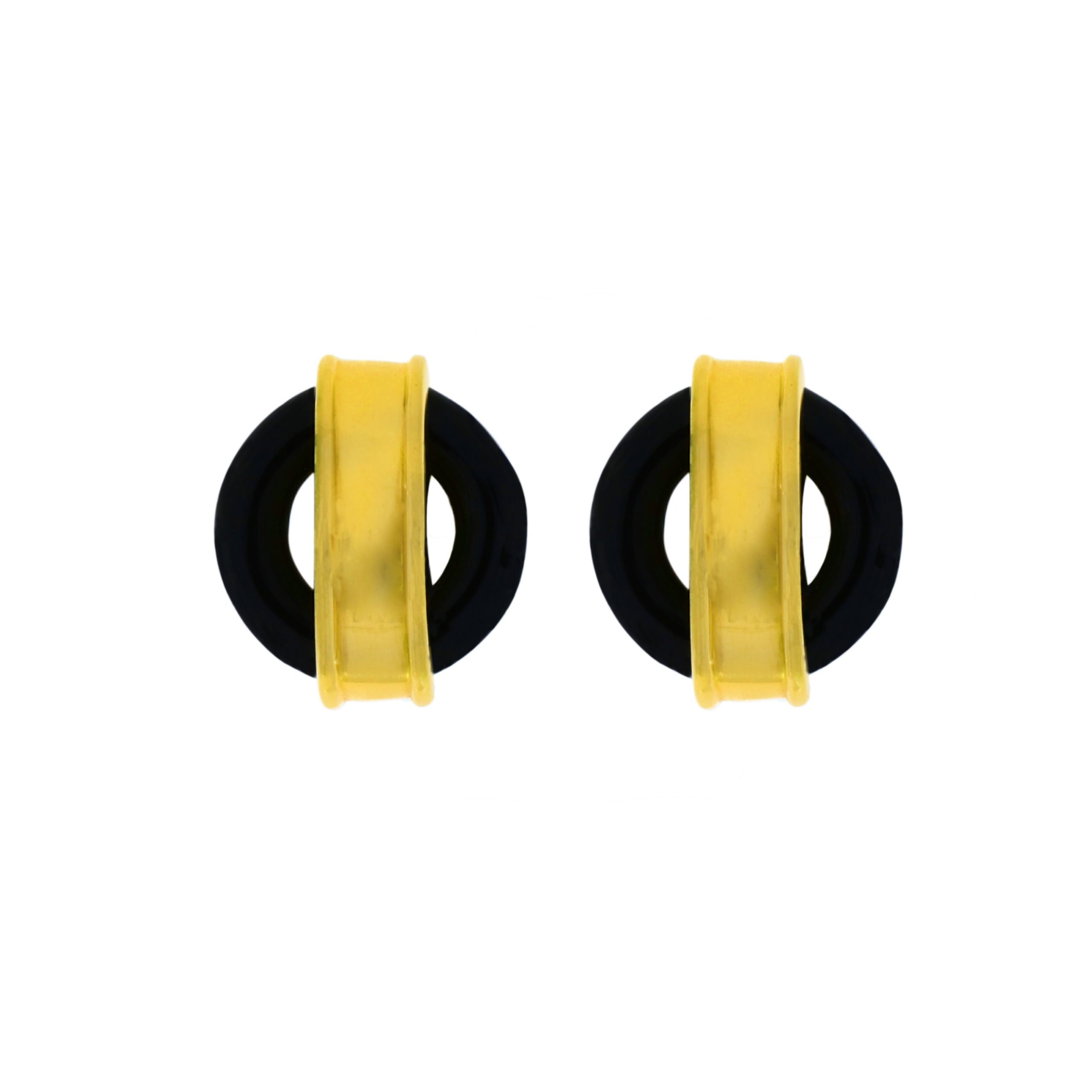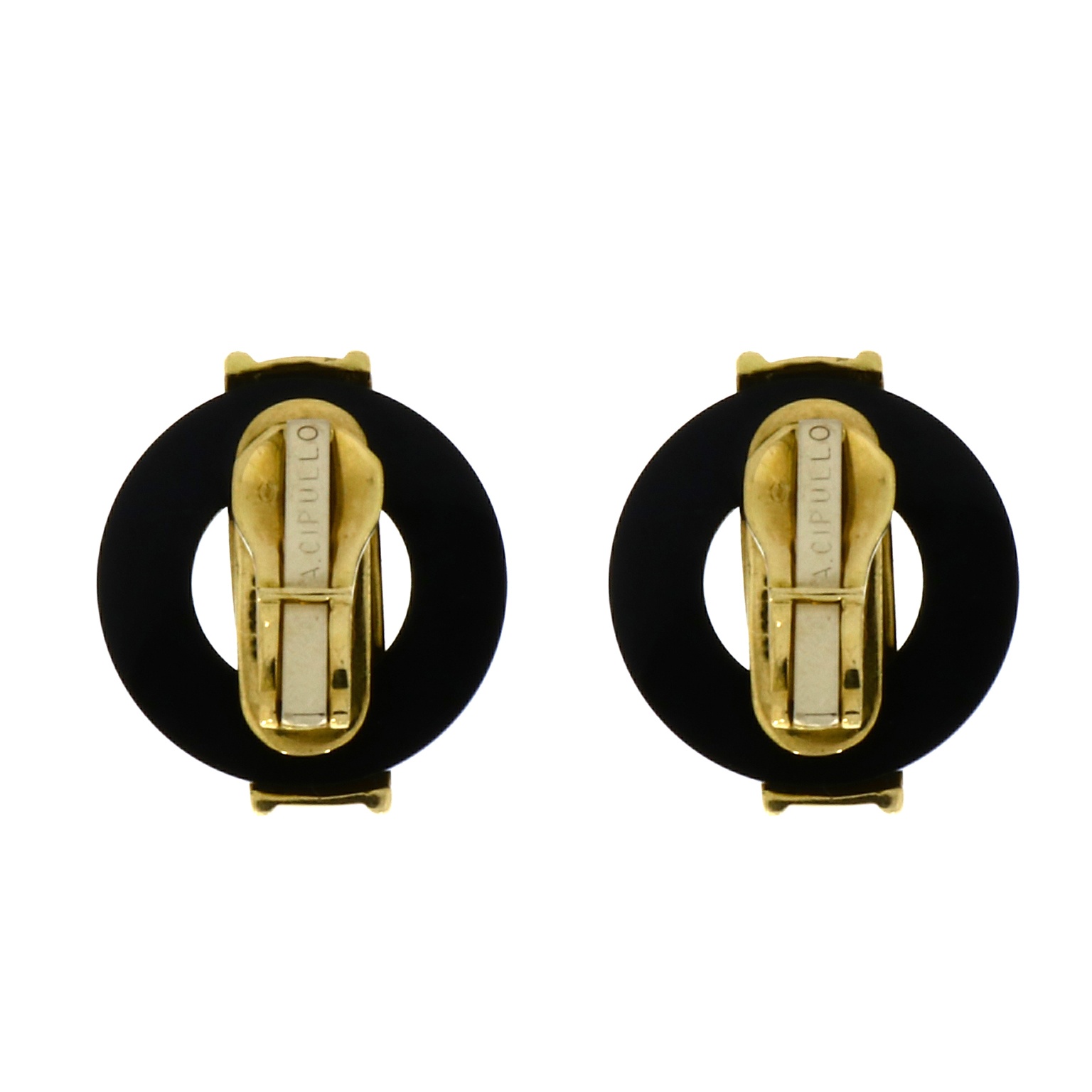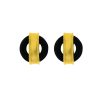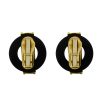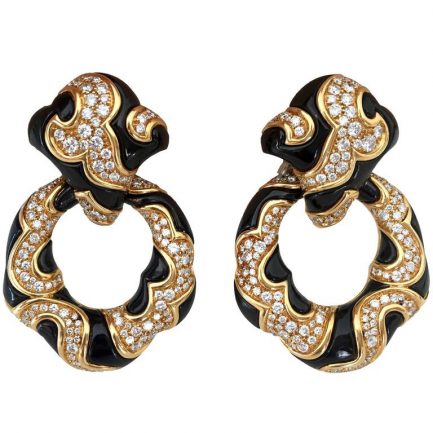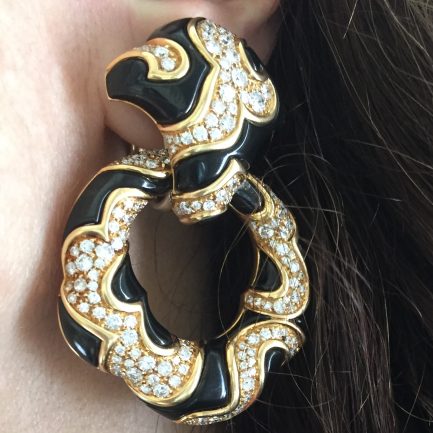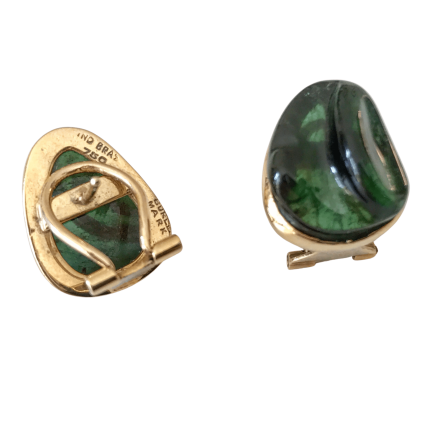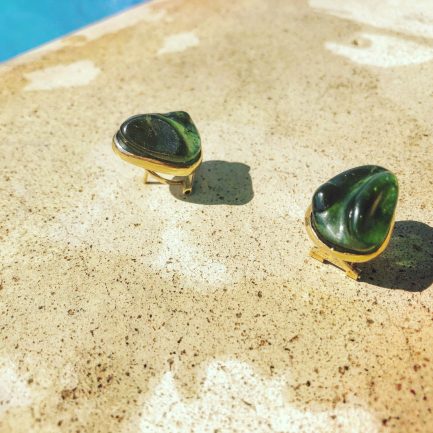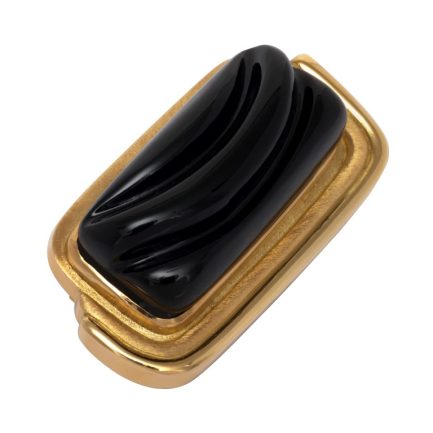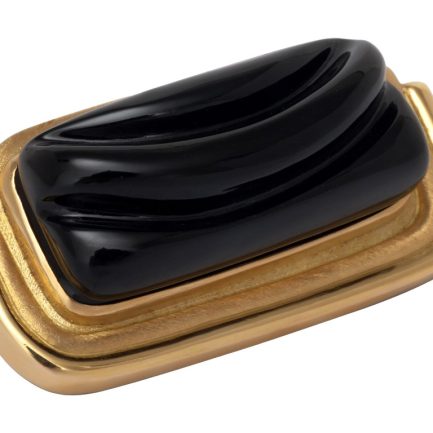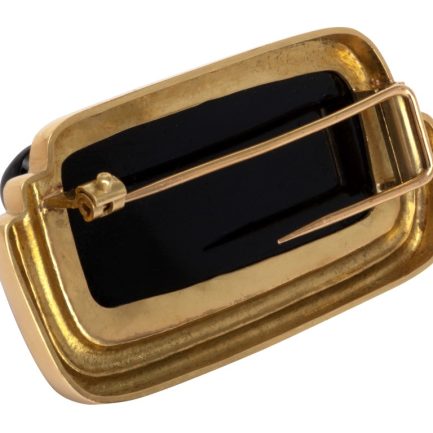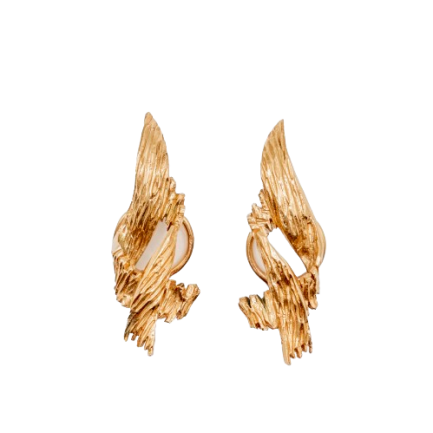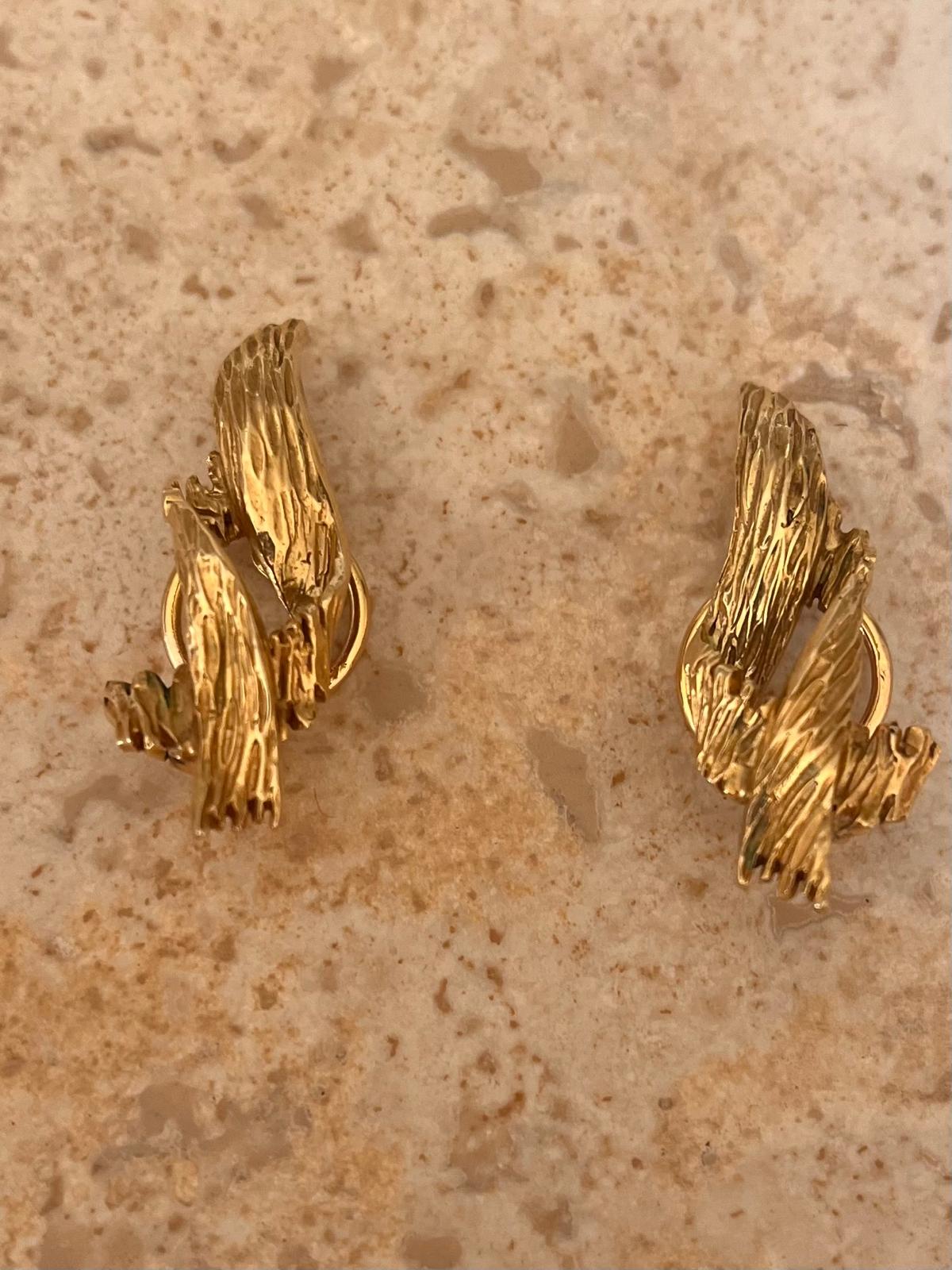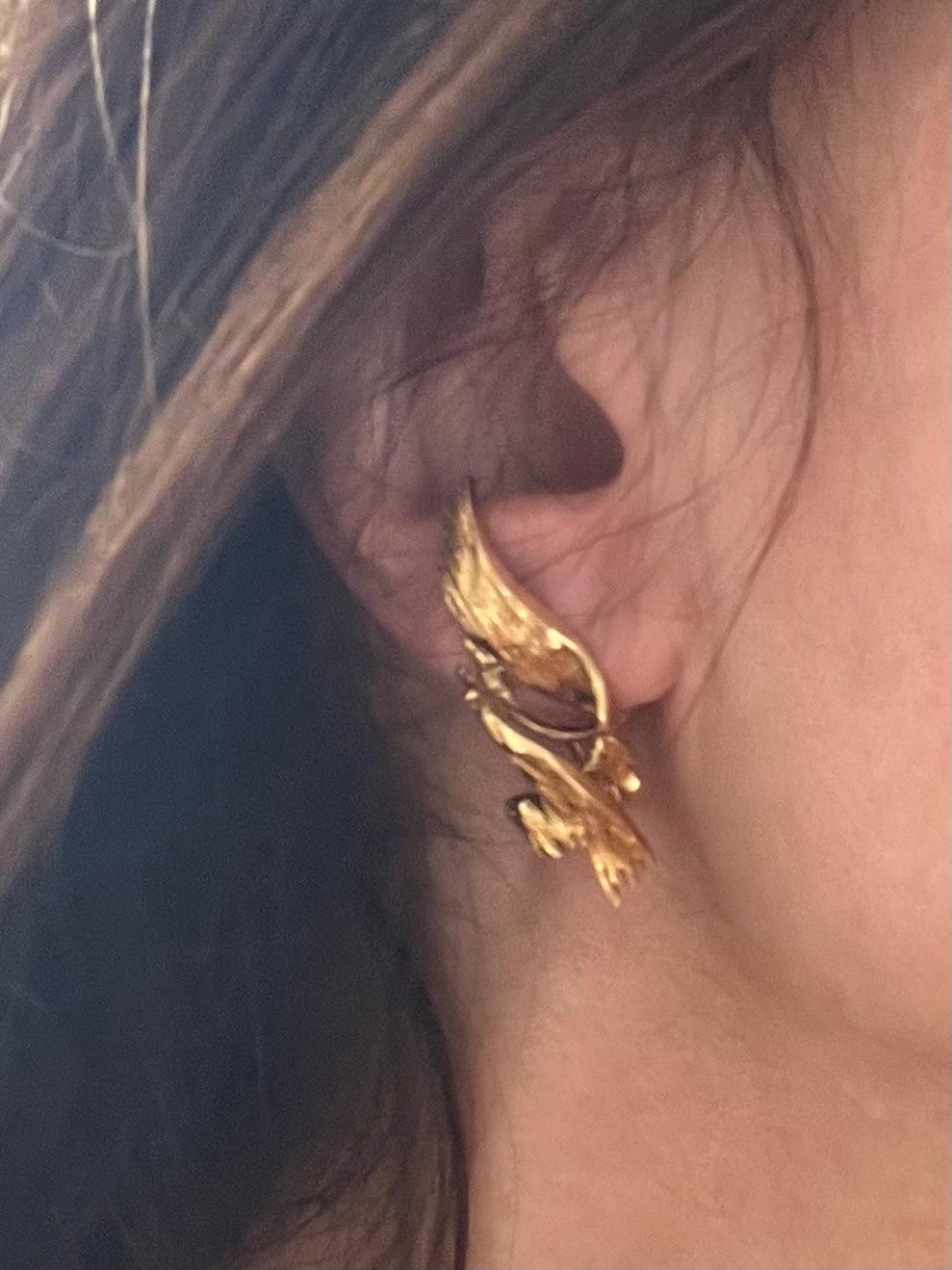A Pair of Clip Earrings – Design by Aldo CipulloDesigner: Cartier by Aldo Cipullo
Circa: 1970
Description: An onyx and gold pair of ear clips. Signed A.Cipullo and Cartier.
2.7 x 2.3 cm
Onyx, Gold 18 K
Aldo Cipullo (1936-1984) was one of the most important jewelry desiners who joined Cartier NY in 1969 for whom he created the most iconic bracelet “Love” and the “Juste Un Clou”. Mixing gold with hard and colored stones, he was inspired by everyday items to transform them into jewelry marvels.
This pair of cartier earrings is the result of the collaboration beetween Cartier and Aldo Cipullo.
To learn more about this jewel, discover the story of the House Cartier here.
And click here if you want to learn more about his designer, Aldo Cipullo.
The house of Cartier was founded in 1847 by Louis-François Cartier (1819-1904).
Their early necklaces and bracelets were designed in the neo-Greco-Roman style. Diamond solitaire earrings in silver mountings, and pearls mounted with diamonds were also signature pieces during this time. Animals and flowers became dominant motifs in pendants, and the mineral tiger’s eye was launched in Paris around 1882.
In 1902, Cartier was one of the key jewelers to be called upon to design and manufacture objects for the coronation of Edward VII in London. Cartier received so many orders for the event that he decided to send his second son, Pierre (1878-1965) to London to handle the orders. Pierre’s trip to London was extremely important for Cartier, as it led to the opening of a Cartier shop in London.
The London branch of Cartier opened in 1902 and in 1906, Alfred’s youngest son, Jacques (1884-1942), became the director of the London branch. He remained there for the duration of his life.
A few years later, Cartier opened a third branch in New York City. Wealthy Americans traveling to Europe had been a large part of Cartier’s clientele from the beginning and Pierre, Alfred’s youngest son, managed this new branch.
The three brothers had taken the approach of ‘divide and conquer’ and whilst they excelled individually it was as a team that they were truly formidable. By 1910 they had several Royal Warrants including King Edward VII, King Carlos of Portugal, the King of Siam and Tsar Nicholas II of Russia.
The use of platinum in jewellery became more widespread at the turn of the century and this enabled Cartier to create incredibly fine metal work frames in which to set their diamonds and coloured stones. Their beautiful Garland style jewels set with diamonds and pearls were the height of sophistication at this time but these would soon be superseded by the jewels created under the influence of Eastern exoticism. The designer Charles Jacqueau (1885-1968) joined Cartier in 1909 and, inspired by the Ballet Russes, he studied the art of India, China, Egypt and Japan. The combination of colour, form and design he found was translated into a wide range of jewellery, tempered by a Western aesthetic and craftsmanship. From 1911 until 1935 he would head up a team of eleven designers in Paris creating an exceptional array of jewellery in what would come to be known as the Art Deco style.
Back in Paris, the Indian Maharajas were commissioning extraordinary jewels during this period, the best known being the Maharaja of Patiala necklace. Jacques brought back many Indian carved gemstones from his travels and these were used in profusion in Cartier jewellery during the 1920’s and 30’s in a style referred to now as Tutti Frutti. Jeanne Toussaint was made Creative Director for jewellery in 1933. Amongst her many achievements she is probably best remembered for turning the panther from an interesting decorative motif into the iconic image that is now synonymous with Cartier. The most famous panther jewel is probably the brooch she designed for the Duchess of Windsor in 1949 featuring the large cat sat proudly atop a huge Kashmir sapphire cabochon weighing over 150cts.
In the 1960’s they designed a series of fabulous snake jewelry, including two very large necklaces for the actress Maria Felix. They also designed striking necklaces incorporating amethyst and turquoise, including a magnificent bib necklace for the Duchess of Windsor.Also in the 1960’s, Cartier went back to the inspiration of jewels from India, using paisley motifs and the facing animal head bracelets, set with precious and semi-precious stones in the Indian taste. They re-visited this theme in the 1980’s. They also produced brooches of elaborate Blackamoor heads, which had been introduced by the Venetian form of Nardi. Also in the ’60’s, Cartier introduced the very popular Coffee Bean line – gold “coffee beans” were used for earrings, brooches, earrings and bracelets, with and without diamond accents.
In the 70s, the Maison collaborated with Aldo Cipullo who was the most important jewelry designers of the 20th century. The italian handsome man joined the Cartier team in 1969 in New York City where he created the most iconic bracelet the « Love Braceet » and then the famous « Juste un clou ». Surrounded by New York’s Studio 54 ceowd, he always dared to draw inspiration from everyday items, transforming them into jewelled marvels.

